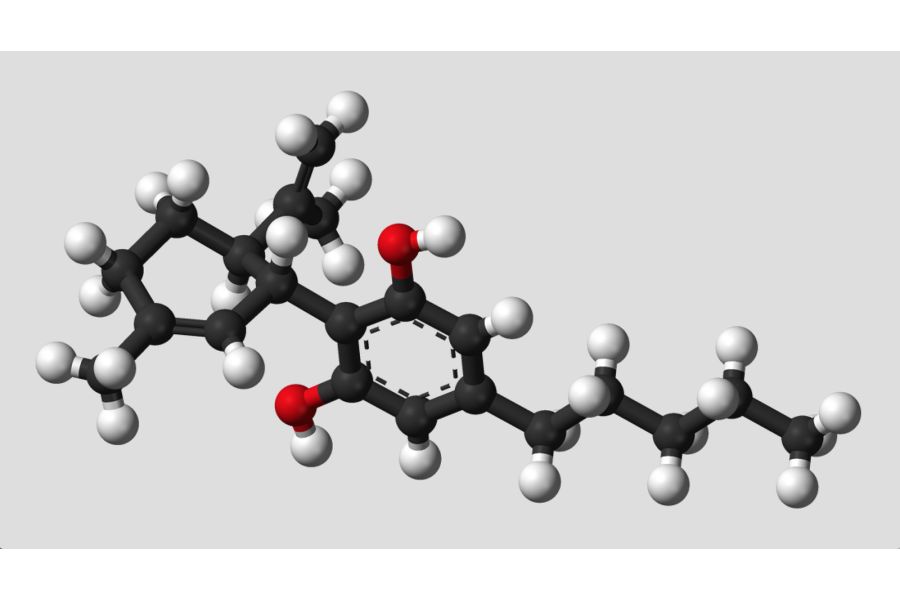Cannabidiol, also known as CBD, is a compound derived from the cannabis plant that lacks psychoactive properties most commonly associated with marijuana.
While CBD may be less popular with recreational marijuana users looking for euphoric highs, it has been hailed within scientific and medical circles for its myriad of therapeutic uses.
The compound has shown promise in treating a variety of conditions, including seizures, tumors, anxiety and substance abuse, according to the
National Institute on Drug Abuse. CBD
remains illegal at the federal level, however, which poses legal hurdles for many U.S. consumers.
CBD v. THC: What’s the difference?
To understand what CBD is, it’s important to know what it’s not.
Cannabis contains at least 85 cannabinoids, a class of chemicals present in cannabis that act primarily on two types of human cell receptors located in the brain and immune system.
Tetrahydrocannabinol, or THC, is the well-known psychoactive cannabinoid found in marijuana. When someone consumes THC, the chemical
binds to brain receptors and impacts coordination and memory, creating a that “stoned” feeling and a sense of intoxication.
CBD, on the other hand, binds primarily to receptors in the
body and immune system, rather that brain receptors. This makes it a non-psychoactive cannabinoid and an attractive research subject in scientific circles.
Barriers to CBD research
Since 1990, researchers have conducted
60 peer-reviewed studies related to potential medical uses for marijuana, including the treatment of cancer, chronic pain, Huntington’s disease and multiple sclerosis. However, only eight of those studies tested CBD exclusively or in tandem with THC.
Clinical research on medical marijuana—including chemical compounds like CBD—has been hampered for decades by legal and political barriers. Although medical marijuana patients and recreational users in many states can walk into dispensaries and purchase cannabis products, the DEA tightly controls which scientific researchers have access to the cannabis plant.
For years, the
only research-grade marijuana available in the U.S. has been grown for the federal government at the University of Mississippi. The DEA under former President Obama announced intentions to ease research barriers and allow other universities to cultivate cannabis for clinical research purposes. However, none of the
25 university applications submitted since the announcement have been approved.
“The use of cannabis for medical treatment is happening in states based largely on anecdotal evidence or limited science,” John Hudak and Grace Wallack wrote in a 2015
Brookings Institution report. “In many cases, patients and doctors operate according to a learn-as-you-go approach—a situation that is inexcusably the fault of federal policies failing to keep pace with changing societal views and state-level legal landscapes.”
This year under President Donald Trump, the DEA announced plans to
cut back production quotas of marijuana for federally-approved research by about 6 percent, further inhibiting meaningful studies at a time when legal consumption of cannabis-related products is soaring.
Promises of CBD therapy
Even with the prohibitive atmosphere surrounding marijuana research, the research that does exist
shows promise for medical CBD use.
The largest field of study for therapeutic CBD is in patients suffering with severe seizures.
A study published this year in the
New England Journal of Medicine compared CBD with a placebo on 120 children and young adults with drug-resistant seizures symptomatic of Dravet Syndrome, a rare genetic childhood disease that causes epilepsy and high mortality rates. CBD use cut the occurrence of seizures by nearly half for 43 percent of trial patients.
The case of Coloradoan
Charlotte Figi, who was born with Dravet Syndrome, is the most famous case of CBD treatment for severe epilepsy.
Other preclinical research suggests CBD may potentially be used for the treatment of
Alzheimer’s disease,
anxiety and
cancer, as well
opioid and
tobacco cessation.
"The use of marijuana as a medicine is remarkably uncontroversial at the bedside of a cancer patient or a child suffering from convulsions who might be helped,” Steven Patierno, deputy director of the Duke Cancer Institute and professor of medicine at Duke University School of Medicine, wrote in a
2014 column for The Wall Street Journal.
Federal and state regulatory patchwork
In December 2016, the DEA reasserted the
Schedule 1 status and prohibition of CBD at the federal level, firmly placing it in the same category as marijuana, heroin, LSD and mescaline.
Despite federal law,
18 states have passed laws specifically regulating CBD use, with Wisconsin and Indiana becoming the latest states to enact CBD-specific laws. CBD is also legal in states with comprehensive medical and recreational marijuana laws.
Idaho, South Dakota, Nebraska, Kansas, Indiana and West Virginia are the only states with total prohibition of marijuana, including CBD.
Scientific interest in CBD is surging across the country as more and more people gain state-level access to the cannabinoid. And despite federal barriers, the U.S. CBD market is projected to be worth a whopping $1 billion by 2020, according to a
report from the Brightfield Group.

